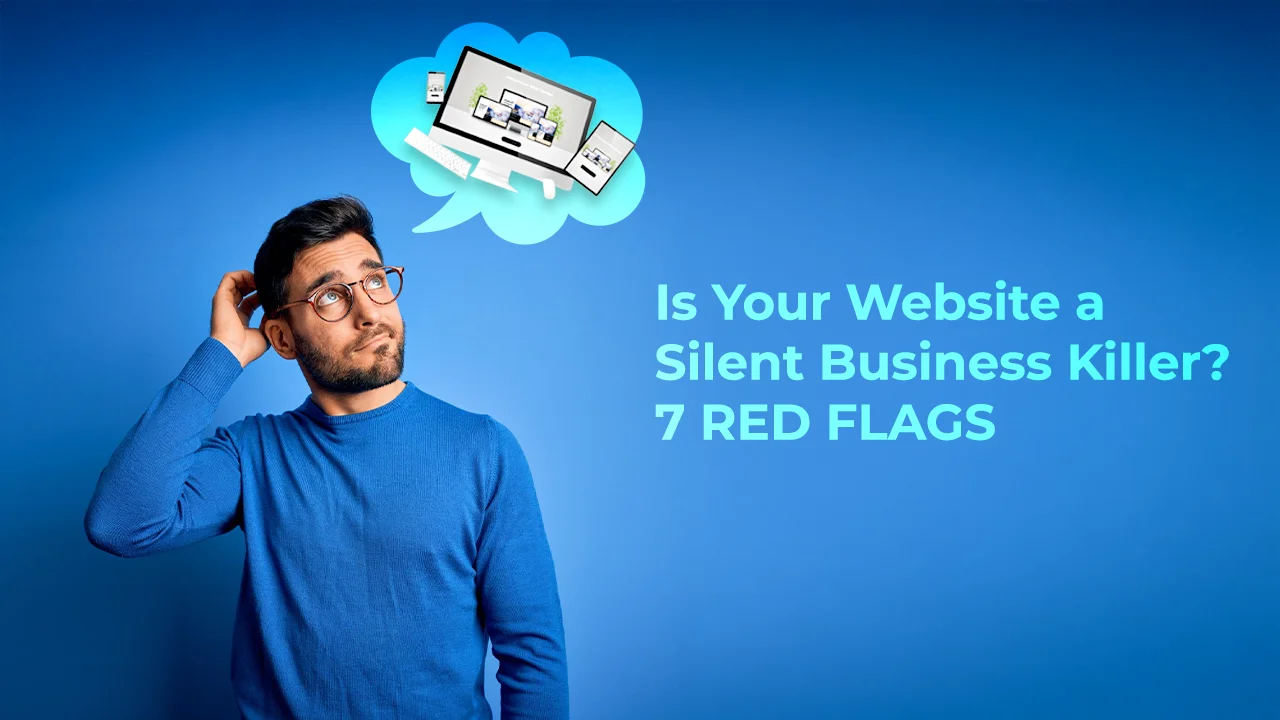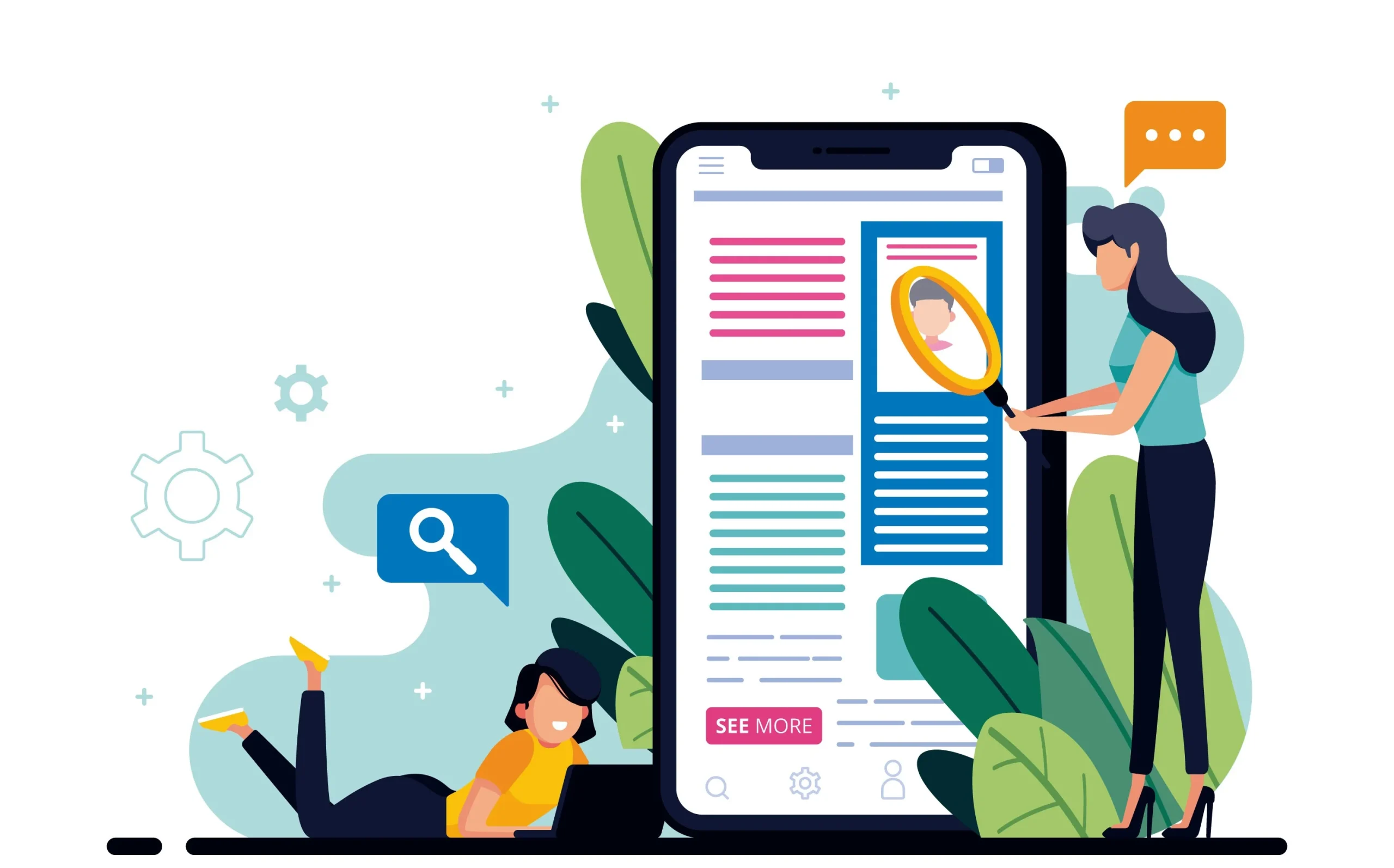
More than just an online presence, your website frequently serves as a prospective customer’s initial impression of your company. An outdated or poorly performing website can turn visitors away, impacting your brand’s credibility and success. Many businesses in India are realising the importance of maintaining a modern, functional website that caters to today’s tech-savvy consumers.
However, how can you determine whether your website needs to be upgraded? Whether it’s lagging performance, outdated aesthetics, or poor mobile compatibility, the signs can be subtle yet significant. In this blog, we’ll discuss seven unmistakable indicators that it’s time to give your business website a revamp. Let’s get into each point and understand why they matter.

1. Outdated Design and User Experience
If your website looks like it belongs in the past decade, it could be hurting your brand’s image. In today’s competitive market, first impressions are crucial, and a clunky or visually outdated website can make visitors question your professionalism.
A modern website should feature clean layouts, intuitive navigation, and a responsive design. Gone are the days when heavy flash animations and overly complicated designs were appealing. Today’s users expect minimalism, interactivity, and aesthetic appeal.
Beyond aesthetics, user experience (UX) plays a significant role in how visitors perceive your site. Elements like cluttered menus, confusing navigation paths, and outdated fonts can frustrate users. In contrast, a streamlined design with clear calls to action improves user satisfaction and encourages them to stay longer. Additionally, outdated designs often lead to increased bounce rates as users feel disconnected or uninspired by the visuals. Investing in a design overhaul can improve engagement metrics and make your website more visually appealing.
Additional Indicators of an Outdated Website:
- The website isn’t mobile-friendly.
- Text appears too small or unreadable on modern devices.
- The interface lacks interactive elements or user-friendly navigation.
- The design feels cluttered, with little to no visual hierarchy.
- Branding elements don’t reflect your current business identity.
- The website lacks dynamic elements like animations or interactive graphics.
During website development, focus on updating the design to reflect your brand’s modern identity. Consider using contemporary design trends, integrating visual storytelling, and ensuring a seamless navigation experience to make your web design visually appealing and highly functional. Adding personalised images and interactive elements can improve user engagement even more.
2. Slow Loading Speeds
Search engine optimization (SEO) and user experience are significantly impacted by website speed). When your site takes too long to load, visitors are likely to bounce off, opting for faster, more accessible alternatives. This is particularly important for businesses in India, where mobile internet users expect quick and seamless access.
Research has shown that users typically abandon a website if it takes more than three seconds to load. This means that even a slight delay can drastically affect your website’s performance metrics. Slow speeds can result from several factors, and identifying the root cause is essential to implementing effective solutions. Moreover, search engines like Google rank faster websites higher, making speed improvements crucial for visibility.
Common Causes of Slow Website Performance:
- Unoptimised images that increase page size.
- Bulky code and outdated plugins slowing down processes.
- Inadequate server resources or shared hosting issues.
- Excessive use of JavaScript or embedded media.
- Caching issues that prevent quick loading.
- Uncompressed files increasing the data load.
Use tools like Google PageSpeed Insights or GTmetrix to do routine speed audits of your website in order to remedy this. Optimising images, reducing unnecessary scripts, and leveraging browser caching can make a significant difference. Additionally, upgrading to a dedicated server or optimised hosting plan can help manage increased traffic without compromising speed. Don’t forget to use content delivery networks (CDNs) to improve load times globally.

3. Poor Mobile Compatibility
With mobile devices accounting for a large portion of internet traffic, a non-responsive website can significantly hurt your reach. In India, mobile-first design is crucial, as users increasingly rely on smartphones to access information and make purchases.
Signs Your Website Isn’t Mobile-Friendly:
- Images and text do not adapt to smaller displays.
- Navigation is difficult, with menus that don’t resize properly.
- Using interactive features and forms on touch devices can be challenging.
- Frequent horizontal scrolling is required to view content.
- Mobile users report frequent crashes or layout issues.
A responsive design ensures that your site adapts to various screen sizes, providing an optimal experience regardless of the device used. Consider implementing a mobile-first approach when redesigning your site to ensure accessibility.
4. Low Search Engine Rankings
If your website is consistently falling behind in search engine results, outdated SEO practices may be to blame. A comprehensive strategy that incorporates user experience, technical SEO, and high-quality content is needed for modern SEO, which goes beyond simple keyword optimisation.
Why Your Website Might Rank Low:
- Content is outdated or lacks depth.
- Page titles and meta descriptions are not optimised.
- Lack of internal linking and structured data.
- Disregarding voice search optimisation, particularly given its growing popularity in India
- Not updating your sitemap regularly.
Website development using SEO requires a strategic approach, from conducting keyword research to optimising on-page elements and building quality backlinks. Regularly updating content with relevant information also plays a key role.
5. Security Vulnerabilities
Cybersecurity is a growing concern, and if your website isn’t adequately protected, you risk data breaches and customer distrust. An unsecured website can also lead to penalties from search engines, damaging your online presence.
Indicators of Security Issues:
- Your site lacks HTTPS encryption.
- Plugins and themes haven’t been updated in months.
- You’ve experienced hacking attempts or data loss.
- Sensitive information is not encrypted or secured properly.
- No regular security scans or updates are performed.
Updating to a secure hosting provider, enabling SSL certificates, and keeping all software up to date are fundamental steps to safeguarding your website.
6. High Bounce Rate
A high bounce rate can be an indication that your website isn’t engaging enough or that visitors aren’t finding what they’re looking for. This could be a result of poor content structure, slow loading speeds, or irrelevant information.
Reasons Behind a High Bounce Rate:
- Visitors encounter technical errors or broken links.
- Content doesn’t match users’ search intent.
- Pages are cluttered with ads or distracting pop-ups.
- Call-to-action buttons are unclear or non-existent.
- Visual elements are overwhelming or poorly designed.
To reduce bounce rates, focus on creating high-quality, relevant content and improving the overall user experience. Streamlined navigation and engaging multimedia can keep users on your site longer.
7. Difficulty Updating Content
A complicated CMS may make it more difficult for you to maintain an updated, attractive and engaging website design. If adding new content or making minor changes feels like a daunting task, it’s time to upgrade to a more flexible platform.
Challenges of an Outdated CMS:
- Limited support for multimedia and interactive features.
- Difficulty integrating third-party plugins or applications.
- Slow content updates due to technical complexity.
- Lack of customisation options for new features.
- Frequent compatibility issues with modern web standards.
Opting for a modern, intuitive CMS like WordPress or HubSpot can significantly streamline content management and updates.
Conclusion
Your website plays a vital role in building trust and engaging customers. It could be time to upgrade if it’s antiquated, sluggish, or not mobile-friendly. A modern, responsive, and secure website can make a world of difference in user experience and business performance. Stay proactive and invest in your online presence to keep pace with evolving consumer expectations and industry standards. Upgrading your website today means investing in long-term success and customer satisfaction.
FAQ’s
How often should I upgrade my business website?
It’s better to review your website’s performance and design every 2 to 3 years. However, if you notice declining traffic, outdated design elements, or poor mobile compatibility, consider upgrading sooner.
What are the most common signs that my website needs an update?
Some common signs include slow loading speeds, outdated design, poor mobile responsiveness, and declining search engine rankings. Additionally, user complaints about navigation or broken features indicate it’s time for a refresh.
Can upgrading my website improve my SEO performance?
Enhancing loading speeds, ensuring mobile compatibility, and implementing user-friendly design elements help boost your site’s ranking on search engines.
How can I make my website more mobile-friendly?
Simplifying navigation, using touch-friendly buttons, and optimising images for mobile devices also improve mobile compatibility.
What should I prioritise when upgrading my business website?
Focus on improving user experience, loading speed, and mobile responsiveness. Additionally, consider integrating modern design trends and updating your content to reflect your current brand identity.





